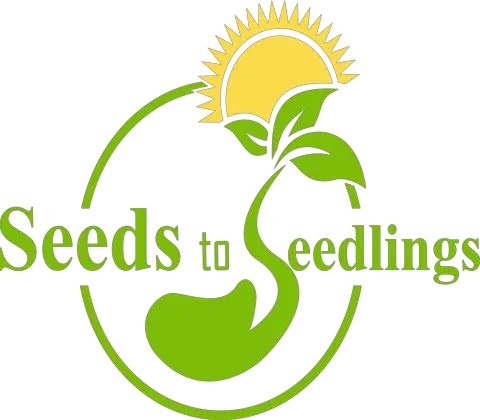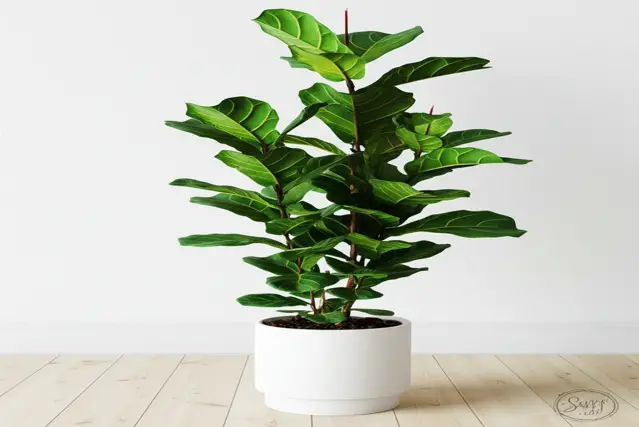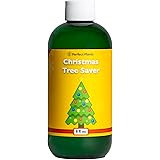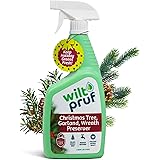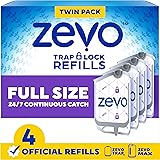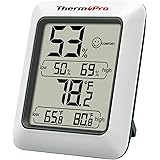The Fiddle Leaf Fig (Ficus lyrata) – a plant that has become synonymous with interior design sophistication. With its large, violin-shaped leaves and dramatic presence, it’s no wonder why this plant is a favorite amongst plant enthusiasts and interior decorators alike. But, beneath its photogenic exterior lies a plant with specific needs, particularly when it comes to light.
And mastering those needs is crucial for ensuring your Fiddle Leaf Fig thrives indoors. In this comprehensive guide, we’ll explore everything you need to know about fiddle leaf fig light needs in 2024, helping you unlock the secrets to a healthy and vibrant plant.
This guide will cover everything from understanding different types of light to troubleshooting common lighting problems, and even explore the latest trends in supplemental lighting. Whether you’re a seasoned plant parent or just starting your indoor jungle, this guide is your key to a flourishing Fiddle Leaf Fig.
Why is Light So Important for Fiddle Leaf Figs?
Light is not just “nice to have” for a Fiddle Leaf Fig; it’s absolutely essential. It’s the fuel that powers photosynthesis, the process by which plants convert light energy into chemical energy (sugars) that they use for growth and survival. Without adequate light, your Fiddle Leaf Fig will slowly starve and become susceptible to various health problems.
The Photosynthesis Process: A Quick Refresher
Photosynthesis is the engine that drives plant life. Here’s a simplified breakdown:
- Plants absorb light energy through chlorophyll, the green pigment in their leaves.
- They take in carbon dioxide from the air through tiny pores called stomata.
- They absorb water from the soil through their roots.
- Using light energy, they convert carbon dioxide and water into glucose (sugar) and oxygen.
- The plant uses the glucose as food for growth and other functions.
- Oxygen is released back into the atmosphere.
Insufficient light means the plant can’t produce enough food, leading to stunted growth, leaf drop, and eventual decline. Conversely, too much direct light can scorch the leaves, causing irreparable damage.

indoor ficus lighting
Light and the Fiddle Leaf Fig’s Native Habitat
To better understand the light needs of a Fiddle Leaf Fig, it’s helpful to consider its native environment. These plants originate from the tropical rainforests of West Africa. In their natural habitat, they grow as understory plants, meaning they receive filtered sunlight beneath the canopy of taller trees. This environment provides bright, indirect light, which is the key to their indoor success.
Understanding Different Types of Light
Not all light is created equal! When discussing plant light, it’s essential to understand the different types and how they impact your Fiddle Leaf Fig.
Direct Sunlight
Direct sunlight is intense, unfiltered light that shines directly onto the plant. While some plants thrive in direct sunlight, Fiddle Leaf Figs are generally not fans. Prolonged exposure to direct sunlight can scorch their leaves, leading to brown, crispy patches.
Think of it this way: Imagine sitting in direct sunlight for hours without sunscreen. You’d quickly get burned! The same principle applies to Fiddle Leaf Figs. The delicate leaves are not equipped to handle the intensity of direct sunlight for extended periods.
Indirect Sunlight
Indirect sunlight is light that has been diffused or filtered before reaching the plant. This type of light is ideal for Fiddle Leaf Figs. It provides the necessary energy for photosynthesis without the risk of scorching.
Imagine the light coming through a sheer curtain or the light in a room that doesn’t have a window facing directly south. That’s indirect sunlight.
Bright Indirect Light
Bright indirect light is the sweet spot for Fiddle Leaf Figs. It’s the brightest possible light without being direct. This type of light is typically found near an east-facing window or a few feet away from a south- or west-facing window. You can often achieve bright indirect light by placing a sheer curtain between your Fiddle Leaf Fig and the window.
A good test is to hold your hand a foot above the plant. If the shadow is soft and diffused, that’s likely bright indirect light. If the shadow is sharp and well-defined, it’s probably direct sunlight.
Low Light
Low light refers to areas where there is very little natural light. Fiddle Leaf Figs can tolerate low light for short periods, but they won’t thrive in these conditions. Over time, low light can lead to stunted growth, leaf drop, and a weakened plant.
Common low-light areas include rooms with small windows, north-facing rooms, or areas far away from any natural light source. Think of a windowless office or a hallway with minimal lighting.
Measuring Light: Foot Candles and Lux
While it’s helpful to understand the different types of light qualitatively, you can also measure light intensity quantitatively using foot candles or lux. These units measure the illuminance of a light source.
Foot Candle (fc): A unit of illuminance equal to one lumen per square foot.
Lux (lx): A unit of illuminance equal to one lumen per square meter. 1 foot candle is approximately equal to 10.764 lux.
A Fiddle Leaf Fig typically needs around 200-400 foot candles (2150-4300 lux) to thrive. You can use a light meter to measure the light intensity in different areas of your home.
While a light meter can provide precise measurements, a good rule of thumb is this: If you can comfortably read a book in the location without any additional lighting, the light level is probably sufficient for a Fiddle Leaf Fig.
Type of LightDescriptionSuitable for Fiddle Leaf Figs?Direct SunlightUnfiltered light shining directly onto the plant.No (can cause leaf burn)Indirect SunlightLight that has been diffused or filtered.Yes (ideal)Bright Indirect LightThe brightest possible light without being direct.Yes (optimal)Low LightAreas with very little natural light.No (can tolerate for short periods, but won’t thrive)
Identifying Light Problems in Your Fiddle Leaf Fig
Even if you think you’re providing the right amount of light, it’s essential to monitor your Fiddle Leaf Fig for signs of light deficiency or excess. Catching these problems early can prevent serious damage and ensure the plant’s long-term health.
Signs of Insufficient Light (Under-lighting)
When a Fiddle Leaf Fig isn’t getting enough light, it will exhibit several telltale signs:
Leaf Drop: This is one of the most common signs of under-lighting. The plant is essentially shedding leaves to conserve energy. Typically, the lower leaves are the first to go.
Stunted Growth: If your Fiddle Leaf Fig isn’t producing new leaves or its growth has slowed significantly, it may not be getting enough light.
Leggy Growth: The plant may stretch towards the light source, resulting in long, spindly stems with widely spaced leaves. This is the plant’s attempt to reach more light.
Pale or Yellowing Leaves: Chlorophyll, the green pigment that absorbs light, may break down in the absence of sufficient light, causing the leaves to turn pale or yellow.
Small Leaves: New leaves may emerge smaller than usual, indicating that the plant doesn’t have enough energy to produce full-sized leaves.
Leaning Towards the Light: The plant will visibly bend or lean towards the nearest window or light source in a desperate attempt to capture more light. This is called phototropism.
Imagine a child who isn’t getting enough to eat. They might become lethargic, stop growing properly, and develop other health problems. The same principle applies to plants and light.
Signs of Excessive Light (Over-lighting)
While Fiddle Leaf Figs need bright light, too much direct sunlight can be just as harmful as too little. Here are some signs that your plant is getting too much light:
Leaf Burn: This is the most obvious sign of over-lighting. The leaves will develop brown, crispy patches, particularly on the parts of the leaf that are most exposed to the sun.
Sun Bleaching: The leaves may become faded or bleached in color, losing their vibrant green hue.
Dry, Brittle Leaves: The leaves may feel dry and brittle to the touch, even if the plant is being watered regularly.
Reddish Tint: In some cases, leaves exposed to excessive light may develop a reddish or purplish tint.
Think of leaving a piece of paper in direct sunlight for an extended period. It will eventually fade, become brittle, and perhaps even burn. The same thing can happen to a Fiddle Leaf Fig’s leaves when exposed to too much direct sunlight.
Distinguishing Between Light Problems and Other Issues
It’s important to note that some of the symptoms of light problems can also be caused by other issues, such as overwatering, underwatering, nutrient deficiencies, or pests. Before jumping to conclusions about light, rule out these other possibilities.
For example, leaf drop can be caused by both under-lighting and overwatering. However, with overwatering, the leaves will often turn yellow and mushy before falling off, whereas with under-lighting, the leaves may simply dry up and drop.
A careful examination of the plant and its environment, along with an understanding of its specific needs, will help you accurately diagnose the problem and take appropriate action.
SymptomPossible Cause(s)Leaf DropUnder-lighting, Overwatering, Underwatering, Drafts, Sudden Temperature Changes, StressStunted GrowthUnder-lighting, Nutrient Deficiency, Root BoundLeggy GrowthUnder-lightingPale or Yellowing LeavesUnder-lighting, Nutrient Deficiency, OverwateringLeaf BurnExcessive Direct Sunlight, Over-fertilizingDry, Brittle LeavesExcessive Direct Sunlight, Low Humidity, Underwatering
Optimizing Light Conditions for Your Indoor Fiddle Leaf Fig
Now that you understand the importance of light and how to identify potential problems, let’s explore practical strategies for optimizing light conditions for your indoor Fiddle Leaf Fig.
Choosing the Right Location
The first step is to choose the right location for your plant. Ideally, you want a spot that receives bright, indirect light for several hours each day. An east-facing window is often a good choice, as it provides gentle morning light. South- or west-facing windows can also work, but you’ll need to diffuse the light with a sheer curtain or move the plant a few feet away from the window to prevent scorching.
Avoid placing your Fiddle Leaf Fig in a dark corner or in a room with minimal natural light. If you don’t have a suitable location with natural light, you may need to consider using artificial lighting (more on that later).
Using Window Treatments to Control Light Intensity
As mentioned earlier, window treatments can be a valuable tool for controlling light intensity. Sheer curtains are excellent for filtering direct sunlight and creating bright, indirect light. Blinds or adjustable shades can also be used to regulate the amount of light reaching the plant.
Experiment with different window treatments and positions to find the optimal light level for your Fiddle Leaf Fig. Observe the plant closely for any signs of over-lighting or under-lighting and adjust accordingly.
Rotating Your Fiddle Leaf Fig
Fiddle Leaf Figs are phototropic, meaning they will grow towards the light source. To ensure even growth and prevent the plant from leaning too much in one direction, it’s essential to rotate it regularly. A quarter turn every week or two is usually sufficient.
This simple practice will help the plant develop a more balanced and aesthetically pleasing shape.
Cleaning the Leaves
Dust and grime can accumulate on the leaves of your Fiddle Leaf Fig, blocking sunlight and hindering photosynthesis. Regularly cleaning the leaves with a damp cloth will help them absorb more light and stay healthy.
Think of it like cleaning a dirty window. A clean window allows more light to pass through, just as clean leaves allow more light to reach the plant’s cells.
Reflecting Light
Utilizing reflective surfaces like mirrors or light-colored walls can amplify the amount of light available to your fiddle leaf fig. Positioning a mirror strategically near your plant can bounce light onto its leaves, especially in rooms with limited natural light. Light-colored walls also help to diffuse and reflect light more effectively than darker shades, contributing to a brighter environment for your plant.
This technique is particularly useful in areas where natural light is scarce or during the darker months of the year. By maximizing the available light through reflection, you can support healthier growth and maintain the vibrancy of your fiddle leaf fig’s foliage.
Considering Seasonal Changes
The amount and intensity of natural light vary throughout the year. During the winter months, when daylight hours are shorter and the sun is weaker, your Fiddle Leaf Fig may need to be moved closer to a window or supplemented with artificial lighting. In the summer, you may need to provide more shade to prevent scorching.
Pay attention to the changing seasons and adjust your plant care routine accordingly.
Artificial Lighting for Fiddle Leaf Figs: A Modern Solution
In many cases, natural light alone may not be sufficient to meet the needs of your Fiddle Leaf Fig, especially during the winter months or in homes with limited natural light. Artificial lighting can be a valuable supplement, providing the plant with the energy it needs to thrive.
Types of Grow Lights
There are several types of grow lights available, each with its own advantages and disadvantages:
LED Grow Lights: LED (Light Emitting Diode) grow lights are the most energy-efficient and long-lasting option. They produce very little heat and can be customized to emit specific wavelengths of light that are beneficial for plant growth. LED grow lights are becoming increasingly popular due to their efficiency and versatility. They also offer a wide spectrum of light options, including full-spectrum lights that mimic natural sunlight.
Fluorescent Grow Lights: Fluorescent grow lights, including T5 and compact fluorescent lamps (CFLs), are another common option. They are more affordable than LED grow lights but less energy-efficient and have a shorter lifespan. Fluorescent lights are suitable for supplementing natural light or providing light to smaller plants.
High-Intensity Discharge (HID) Grow Lights: HID grow lights, such as metal halide (MH) and high-pressure sodium (HPS) lamps, are very powerful and can cover a large area. However, they also produce a lot of heat and consume a significant amount of energy. HID grow lights are typically used for larger-scale indoor growing operations and are not ideal for home use.
For Fiddle Leaf Figs, LED grow lights are generally the best choice. They provide the right spectrum of light, are energy-efficient, and don’t produce excessive heat.
Understanding Light Spectrum: What Wavelengths Do Fiddle Leaf Figs Need?
Plants use different wavelengths of light for different purposes. Chlorophyll, the primary pigment responsible for photosynthesis, absorbs light most efficiently in the blue (400-500 nm) and red (600-700 nm) regions of the spectrum. Therefore, a grow light that emits light in these regions will be most effective for promoting plant growth.
Full-spectrum LED grow lights are designed to emit a broad range of wavelengths, mimicking natural sunlight. These lights are a good choice for Fiddle Leaf Figs, as they provide all the necessary wavelengths for healthy growth.
How to Use Grow Lights Effectively
To use grow lights effectively, consider the following tips:
Distance: Position the grow light at the appropriate distance from the plant. Generally, LED grow lights should be placed 12-24 inches away from the plant. Too close, and the light can be too intense; too far, and the plant won’t receive enough light.
Duration: Provide the plant with 12-16 hours of artificial light per day. You can use a timer to automate the process.
Intensity: Adjust the intensity of the grow light to match the plant’s needs. Some LED grow lights have adjustable intensity settings.
Monitor the Plant: Observe the plant closely for any signs of over-lighting or under-lighting and adjust the grow light accordingly.
A good starting point is to provide 14 hours of artificial light per day, positioned about 18 inches away from the plant. Monitor the plant for any signs of stress and adjust the duration or distance as needed.
Current Trends in Grow Light Technology
The grow light industry is constantly evolving, with new technologies and products emerging all the time. Some of the current trends include:
Smart Grow Lights: Smart grow lights can be controlled remotely via a smartphone app. They often have built-in sensors that monitor light intensity, temperature, and humidity, and can automatically adjust the lighting based on these parameters.
Quantum Board LED Grow Lights: Quantum board LED grow lights are a newer type of LED grow light that uses a large, flat panel of LEDs to provide more even light distribution. They are also very energy-efficient and produce less heat than traditional LED grow lights.
Full-Spectrum COB LED Grow Lights: COB (Chip-on-Board) LED grow lights use a single, large LED chip to produce a high-intensity, full-spectrum light. They are known for their efficiency and ability to promote vigorous plant growth.
These trends reflect a growing demand for more efficient, versatile, and user-friendly grow lights.
Troubleshooting Common Fiddle Leaf Fig Lighting Problems
Even with the best intentions, you may still encounter lighting problems with your Fiddle Leaf Fig. Here are some common issues and how to troubleshoot them:
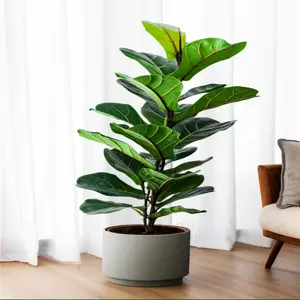
bright indirect light
Problem: Leaf Drop
Possible Causes: Under-lighting, overwatering, underwatering, drafts, sudden temperature changes, stress.
Troubleshooting Steps:
1. Assess the light levels: Is the plant receiving enough bright, indirect light? If not, move it to a brighter location or supplement with a grow light.
2. Check the watering schedule: Allow the soil to dry out slightly between waterings. Ensure the pot has good drainage.
3. Protect the plant from drafts and sudden temperature changes.
4. If the plant has recently been moved or repotted, give it time to adjust.
Problem: Leaf Burn
Possible Causes: Excessive direct sunlight, over-fertilizing.
Troubleshooting Steps:
1. Move the plant away from direct sunlight or provide shade with a sheer curtain.
2. Reduce the frequency and amount of fertilizer.
3. Flush the soil with water to remove excess fertilizer salts.
Read More: Holes in Peace Lily Leaves: Causes, Prevention, and Treatment
Problem: Leggy Growth
Possible Causes: Under-lighting.
Troubleshooting Steps:
1. Move the plant to a brighter location or supplement with a grow light.
2. Prune the leggy stems to encourage bushier growth. You can find detailed guides on pruning online.
3. Rotate the plant regularly to ensure even light exposure.
Problem: Pale or Yellowing Leaves
Possible Causes: Under-lighting, nutrient deficiency, overwatering.
Troubleshooting Steps:
1. Assess the light levels: Is the plant receiving enough bright, indirect light? If not, move it to a brighter location or supplement with a grow light.
2. Fertilize the plant with a balanced fertilizer.
3. Check the watering schedule: Allow the soil to dry out slightly between waterings.
Problem: No New Growth
Possible Causes: Under-lighting, nutrient deficiency, root bound, dormancy.
Troubleshooting Steps:
1. Assess the light levels: Is the plant receiving enough bright, indirect light? If not, move it to a brighter location or supplement with a grow light.
2. Fertilize the plant with a balanced fertilizer.
3. Check the size of the pot: If the plant is root bound, repot it into a larger container.
4. Be patient: Fiddle Leaf Figs may go dormant during the winter months and resume growth in the spring.
Remember that diagnosing plant problems can sometimes be a process of elimination. Start with the most common causes and systematically rule them out until you identify the culprit.
Fiddle Leaf Fig Light Needs: Regional Considerations (2024 Updates)
The best lighting strategy for your Fiddle Leaf Fig can vary depending on your geographical location. Factors like latitude, climate, and seasonal sunlight patterns significantly affect the amount and quality of natural light your plant receives. As of 2024, understanding these regional differences is crucial for providing optimal care.
Northern Latitudes
In regions at higher latitudes (e.g., Canada, Northern Europe, parts of the Northern US), the angle of the sun is lower, and daylight hours are shorter, especially during winter. This means less intense and less direct sunlight. Fiddle Leaf Figs in these areas often benefit from being placed in south-facing windows to maximize exposure to available light. Supplemental grow lights are highly recommended, particularly from late fall through early spring, to compensate for reduced natural light. The use of full-spectrum LED lights can mimic natural sunlight, ensuring the plant receives adequate energy for photosynthesis.
Southern Latitudes
Closer to the equator (e.g., Southern US, tropical regions), the sun is more intense year-round. Fiddle Leaf Figs in these regions can easily suffer from leaf burn if exposed to direct sunlight, especially during the hotter months. East-facing windows are often preferable for morning light, and west-facing windows should be avoided due to harsh afternoon sun. Sheer curtains are essential to filter strong sunlight. Monitoring the plant closely for signs of sun stress is crucial, and adjusting its position accordingly can prevent damage.
Coastal Regions
Coastal areas often experience more consistent cloud cover and diffused sunlight due to maritime weather patterns. While direct sunlight may be less of a concern, the overall light intensity might still be lower. Placing Fiddle Leaf Figs near east- or west-facing windows and using light-colored walls to reflect light can help. Supplemental lighting may be beneficial, especially during prolonged periods of overcast weather. Additionally, the humidity in coastal regions can influence plant health, so ensuring proper ventilation is important to prevent fungal issues.
Inland Regions
Inland areas typically have more varied weather patterns, with hotter summers and colder winters. During summer, providing shade with sheer curtains or moving the plant away from direct sunlight is essential. In winter, maximize exposure to available light by placing the plant near south-facing windows. The dry air in many inland regions can also be a challenge, so increasing humidity through misting or using a humidifier can help maintain healthy foliage.
Urban vs. Rural Environments
Urban environments often have buildings that block natural light, creating shaded areas. Additionally, pollution can reduce the amount of sunlight that reaches your plant. In urban areas, using grow lights is often necessary to supplement natural light, especially if the plant is located far from a window. In contrast, rural environments typically offer more access to natural light, but monitoring the plant for signs of sun stress during peak sunlight hours is still important.
By considering these regional factors, you can tailor your Fiddle Leaf Fig care routine to provide the specific light conditions your plant needs to thrive, regardless of where you live. Regular observation and adjustments based on your plant’s response will ensure its health and vitality.
The Role of Humidity and Temperature in Relation to Light
While light is arguably the most important factor in Fiddle Leaf Fig care, humidity and temperature also play a significant role and are closely intertwined with light. Optimizing these factors can create a more favorable environment for your plant and enhance its ability to utilize light effectively.
Humidity
Fiddle Leaf Figs thrive in environments with relatively high humidity (around 60-70%). Low humidity can lead to dry, crispy leaves, even if the plant is getting enough light. Here’s how humidity interacts with light:
Photosynthesis: Adequate humidity helps the plant maintain open stomata (pores on the leaves), allowing for efficient gas exchange (carbon dioxide in, oxygen out) during photosynthesis. Low humidity can cause the stomata to close, reducing the plant’s ability to absorb carbon dioxide and utilize light.
Water Loss: Low humidity increases the rate of transpiration (water loss from the leaves). This can stress the plant and make it more susceptible to leaf burn, especially in bright light.
Nutrient Uptake: Proper humidity helps the plant absorb nutrients from the soil, which are essential for chlorophyll production and photosynthesis.
If you live in a dry climate, consider increasing the humidity around your Fiddle Leaf Fig by:
Using a Humidifier: This is the most effective way to increase humidity.
Grouping Plants: Plants release moisture into the air through transpiration. Grouping plants together can create a more humid microclimate.
Placing a Tray of Water Near the Plant: As the water evaporates, it will increase the humidity in the surrounding area.
Misting the Leaves: Misting can provide temporary relief from low humidity, but it’s not a long-term solution. Be sure to mist in the morning to allow the leaves to dry before nightfall, preventing fungal issues.
Temperature
Fiddle Leaf Figs prefer temperatures between 65-75°F (18-24°C). Extreme temperatures can stress the plant and affect its ability to utilize light.
Photosynthesis: Photosynthesis is most efficient within the optimal temperature range. Extreme temperatures can slow down or even halt the process.
Respiration: Plants also respire, which is the process of breaking down sugars to release energy. High temperatures can increase the rate of respiration, causing the plant to use more energy than it produces through photosynthesis.
Nutrient Uptake: Extreme temperatures can affect the plant’s ability to absorb nutrients from the soil.
Avoid placing your Fiddle Leaf Fig near drafts, heating vents, or air conditioning units. These can cause sudden temperature fluctuations that stress the plant.
Ideally, maintain a consistent temperature and humidity level around your Fiddle Leaf Fig. This will create a more stable environment and allow the plant to thrive.
Read More: Understanding The Yellow Liquid In Aloe Vera: Benefits And Uses
Fertilizing and Light: The Interplay
Fertilizing your Fiddle Leaf Fig correctly is essential for its health, and it’s intrinsically linked to the amount of light the plant receives. Proper fertilization ensures that the plant has the necessary nutrients to utilize light effectively for photosynthesis and overall growth. Understanding this interplay will help you maintain a thriving plant.
Nutrient Needs and Photosynthesis
Photosynthesis, the process by which plants convert light energy into chemical energy (sugars), requires several essential nutrients. Key nutrients include nitrogen (N), phosphorus (P), and potassium (K), which are often represented as N-P-K on fertilizer labels. Here’s how these nutrients support photosynthesis:
- Nitrogen (N): Essential for the production of chlorophyll, the green pigment in leaves that absorbs light. A nitrogen deficiency can lead to yellowing leaves (chlorosis) and reduced photosynthetic capacity.
- Phosphorus (P): Crucial for energy transfer within the plant and the development of roots and new growth. It aids in the conversion of light energy into chemical energy.
- Potassium (K): Regulates the opening and closing of stomata (pores on leaves), which controls carbon dioxide intake and water loss. Adequate potassium ensures efficient carbon dioxide uptake for photosynthesis.
In addition to N-P-K, micronutrients such as iron, magnesium, and manganese are also vital for various enzymatic processes involved in photosynthesis. A deficiency in any of these nutrients can impair the plant’s ability to utilize light effectively.
Balancing Light and Fertilizer
The amount of light your Fiddle Leaf Fig receives directly influences its nutrient requirements. A plant in bright, indirect light will photosynthesize more actively and, therefore, require more nutrients than a plant in low light. Here’s how to balance light and fertilizer:
- High Light Conditions: If your Fiddle Leaf Fig is in a spot with bright, indirect light, fertilize it regularly during the growing season (spring and summer). Use a balanced liquid fertilizer diluted to half strength every 2-4 weeks. This ensures the plant has the necessary nutrients to support vigorous growth.
- Low Light Conditions: In low light, the plant’s metabolic rate is slower, and it requires fewer nutrients. Over-fertilizing in these conditions can lead to nutrient buildup in the soil, causing root burn and other problems. Reduce the frequency and concentration of fertilizer; fertilize every 6-8 weeks with a diluted solution.
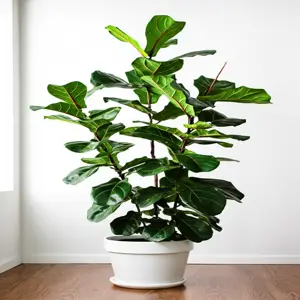
Signs of Nutrient Deficiencies and Excess
Recognizing the signs of nutrient deficiencies and excess is crucial for adjusting your fertilization strategy:
- Nitrogen Deficiency: Yellowing of older leaves, stunted growth.
- Phosphorus Deficiency: Slow growth, dark green leaves with a purple tint.
- Potassium Deficiency: Yellowing or browning of leaf edges, weak stems.
- Over-Fertilization: White crust on soil surface, leaf burn (brown, crispy edges), wilting despite moist soil.
If you observe any of these symptoms, adjust your fertilization routine accordingly. Flush the soil with water to remove excess salts if you suspect over-fertilization. Conduct a soil test to confirm nutrient levels and adjust your fertilizer mix as needed.
Seasonal Fertilization
Adjust your fertilization schedule to align with the plant’s natural growth cycle. During the growing season (spring and summer), fertilize more frequently to support active growth. Reduce or halt fertilization during the dormant season (fall and winter) when the plant’s growth slows down. This prevents nutrient buildup in the soil and supports the plant’s overall health.
Choosing the Right Fertilizer
Select a fertilizer specifically formulated for houseplants or Fiddle Leaf Figs. Look for a balanced N-P-K ratio (e.g., 10-10-10 or 20-20-20) and ensure it contains micronutrients. Liquid fertilizers are easy to dilute and apply, providing a quick boost of nutrients. Slow-release fertilizers can also be used but should be applied judiciously, especially in low-light conditions.
By understanding the interplay between light and fertilization, you can provide your Fiddle Leaf Fig with the optimal conditions for healthy growth and vibrant foliage. Regularly monitor your plant’s health and adjust your care routine as needed to maintain a balanced environment.
Acclimatizing Your Fiddle Leaf Fig to Indoor Light
Bringing a Fiddle Leaf Fig indoors, especially after it has been grown in a greenhouse or outdoors, requires a process of acclimatization. This gradual adjustment helps the plant adapt to the different light levels, humidity, and temperature conditions of your indoor environment.
The Importance of Acclimatization
Fiddle Leaf Figs grown in nurseries often receive intense light and carefully controlled conditions. Moving them directly into your home can shock the plant, leading to leaf drop, stunted growth, or other health problems. Acclimatization allows the plant to gradually adjust to its new surroundings, minimizing stress and maximizing its chances of thriving.
Step-by-Step Acclimatization Process
Bringing a Fiddle Leaf Fig into your home—whether it’s a new purchase or transitioning from outdoors—requires a careful acclimatization process. These plants thrive on stability, and sudden changes in light exposure can lead to stress, leaf drop, or scorching. To help your plant adjust smoothly, follow this gradual approach.
Start by placing your Fiddle Leaf Fig in a spot with moderate, indirect light, such as near an east-facing window or a few feet back from a south- or west-facing window with a sheer curtain. This mimics the dappled sunlight of its natural rainforest habitat while protecting it from harsh direct rays. Avoid placing it in full sun immediately, as this can shock the plant and cause leaf burn.
Over the next 2–4 weeks, slowly increase its light exposure. You can do this by moving it closer to the window in small increments (a few inches every few days) or by gradually reducing shading, such as opening blinds wider or removing a sheer curtain. Keep a close eye on the leaves—if you notice yellowing, browning, or drooping, pause the adjustment and give the plant time to recover before continuing.
Once acclimated, your Fiddle Leaf Fig should settle into its ideal spot: bright, indirect light for most of the day, with protection from intense midday sun. If you want to give it some direct sunlight (such as near a south-facing window), limit exposure to 1–2 hours per day to prevent burns. Rotate the plant weekly to ensure even growth, and adjust its placement seasonally—more light in winter, slightly more shade in peak summer.
If you’re moving your plant from outdoors to indoors, reverse the process: start by placing it in full shade for a week, then gradually reduce its light exposure over 2–3 weeks before bringing it inside. This prevents shock from the sudden drop in light intensity.
Conclusion
Successfully acclimatizing your Fiddle Leaf Fig to indoor light ensures a smooth transition, minimizing stress and promoting long-term health. By introducing light gradually and monitoring your plant’s response, you’ll help it adapt to its new environment with lush, vibrant foliage. Remember, patience is key—every plant adjusts at its own pace. With the right care, your Fiddle Leaf Fig will thrive as a stunning centerpiece in your home for years to come. Happy growing!
Auto Amazon Links: No products found.
Perfect Plants Christmas Tree Saver 8oz. | Easy Use Xmas Tree Preserver Food | Have Healthy Green Christmas Trees All Holiday Season
$7.99 (as of December 23, 2025 06:28 GMT +00:00 - More info- Product prices and availability are accurate as of the date/time indicated and are subject to change. Any price and availability information displayed on [relevant Amazon Site(s), as applicable] at the time of purchase will apply to the purchase of this product.
FirEver Pure Christmas Tree Food | Preserver Additive & Season Extender for Live Xmas Trees | Keep It Green, Reduce Needle-Drop | Miracle Freshness (8 oz)
$9.16 (as of December 23, 2025 06:28 GMT +00:00 - More info- Product prices and availability are accurate as of the date/time indicated and are subject to change. Any price and availability information displayed on [relevant Amazon Site(s), as applicable] at the time of purchase will apply to the purchase of this product.
Wilt-Pruf® Christmas Tree/Cutting Preserver Spray |Preserves Christmas Trees, Wreaths, Garlands, Cuttings and Carved Pumpkins | Reduces Needle Drop | Keeps Cut Trees Fresh Longer | Natural (32 oz)
$21.99 (as of December 23, 2025 06:28 GMT +00:00 - More info- Product prices and availability are accurate as of the date/time indicated and are subject to change. Any price and availability information displayed on [relevant Amazon Site(s), as applicable] at the time of purchase will apply to the purchase of this product.
Transmission Funnel - 3'' Wide 23'' Long Funnel with Hose – Flexible, Reusable, No Leak Design Featuring Elastic Long Hose | Long Funnel for Oil, Gas, Coolant, Automotive and Garage Applications
$7.95 (as of December 23, 2025 06:28 GMT +00:00 - More info- Product prices and availability are accurate as of the date/time indicated and are subject to change. Any price and availability information displayed on [relevant Amazon Site(s), as applicable] at the time of purchase will apply to the purchase of this product.
TreeVive™ Natural Christmas Tree Preservative – Extends Freshness & Needle Retention – Enhances Pine Scent – Safe, Non-Toxic, Pet-Friendly Additive for Hydration, Color & Holiday Tree Care
$8.99 (as of December 23, 2025 06:28 GMT +00:00 - More info- Product prices and availability are accurate as of the date/time indicated and are subject to change. Any price and availability information displayed on [relevant Amazon Site(s), as applicable] at the time of purchase will apply to the purchase of this product.
Muddy Mat® | Super Absorbent Door Mat Indoor, Microfiber Quick Dry Chenille Entryway Rug, Non-Slip Front Door Mat, Indoor Mats for Entryway, Machine Washable Pet Rug, Grey 30"x19"
$19.95 (as of December 23, 2025 12:07 GMT +00:00 - More info- Product prices and availability are accurate as of the date/time indicated and are subject to change. Any price and availability information displayed on [relevant Amazon Site(s), as applicable] at the time of purchase will apply to the purchase of this product.
OLANLY Dog Door Mat for Muddy Paws 30x20, Absorbs Moisture and Dirt, Absorbent Non-Slip Washable Doormat, Quick Dry Chenille Mud Mat for Dogs, Entry Indoor Entryway Carpet for Inside Floor, Grey
$9.99 (as of December 23, 2025 12:07 GMT +00:00 - More info- Product prices and availability are accurate as of the date/time indicated and are subject to change. Any price and availability information displayed on [relevant Amazon Site(s), as applicable] at the time of purchase will apply to the purchase of this product.
Zevo Flying Insect Trap Official Refill Cartridges - Fits Both Zevo Trap & MAX Indoor Fly Trap - Authentic Trap+Lock Technology to Catch Gnats, House & Fruit Flys (4 Official Refill Cartridges)
$14.97 (as of December 23, 2025 12:07 GMT +00:00 - More info- Product prices and availability are accurate as of the date/time indicated and are subject to change. Any price and availability information displayed on [relevant Amazon Site(s), as applicable] at the time of purchase will apply to the purchase of this product.
TERRO Ant Killer Bait Stations T300B - Liquid Bait to Eliminate Ants - Bait System - 12 Count Stations for Effective Indoor Ant Control
$10.88 (as of December 23, 2025 12:07 GMT +00:00 - More info- Product prices and availability are accurate as of the date/time indicated and are subject to change. Any price and availability information displayed on [relevant Amazon Site(s), as applicable] at the time of purchase will apply to the purchase of this product.
ThermoPro TP50 Digital Hygrometer Indoor Thermometer Room Thermometer and Humidity Gauge with Temperature Humidity Monitor
$11.99 (as of December 23, 2025 12:07 GMT +00:00 - More info- Product prices and availability are accurate as of the date/time indicated and are subject to change. Any price and availability information displayed on [relevant Amazon Site(s), as applicable] at the time of purchase will apply to the purchase of this product.
